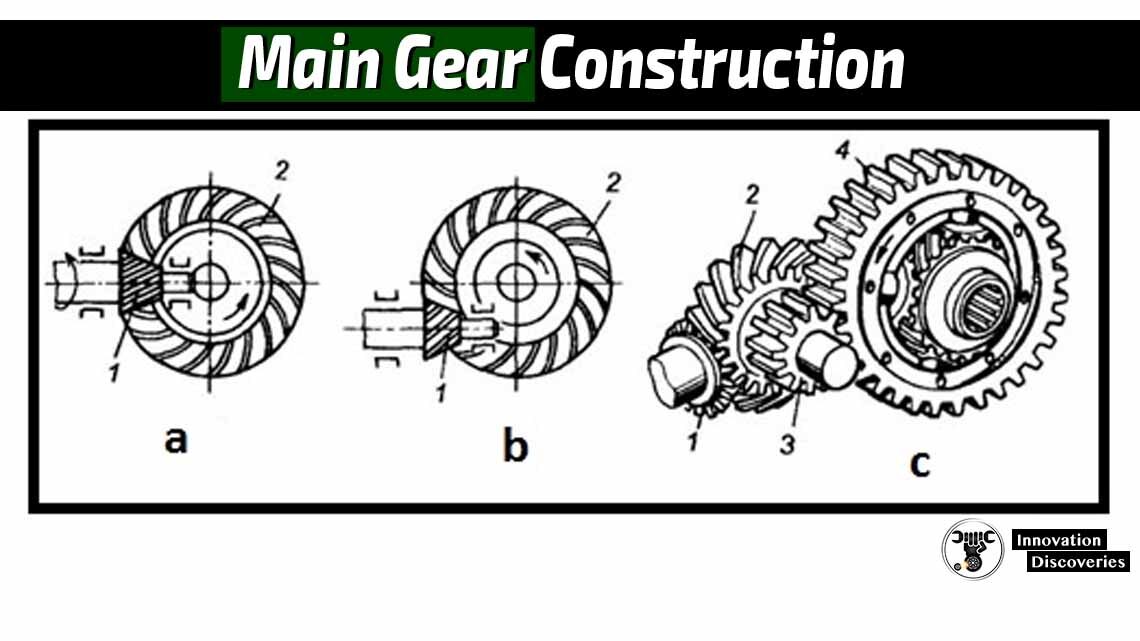
The main gears increase the torque and transmit it to the axle shaft located at an angle of 90 ° to the longitudinal axis of the car (when the engine is parallel to the longitudinal axis of the car).
Requirements for the main transfer:
- optimal gear ratio;
- high efficiency;
- low noise level;
- small vertical dimensions (usually the bottom. the crankcase of the final drive determines the amount of ground clearance).
The main gears are divided into single and double according to the number of gear ratio conversion stages.
Main gear construction:
a – conical;
b – hypoid;
c – double;
1 and 2 – leading and driven bevel gears, respectively;
3 and 4 – leading and driven spur gears, respectively.
The main single gears can be:
- Conical (axes of gears intersect);
- Hypoid (axes of gears cross);
- cylindrical;
- The worm gear (with the top or bottom of the worm).
- Unlike a single, a double gear consists of two pairs of gears.
According to the layout scheme, the main double gears are divided into central and spaced. In the central final drive, both pairs of gears make up the central gear.
In a spaced main gear, one pair of gears forms a central gear, and the second goes to the drive wheels, forming two-wheel gears with the same gear ratios.
By type, the main double gears are divided into the following gears:
- conical-cylindrical;
- cylindrical-conical;
- conical planetary.
A final drive is called a drive gear if it has a drive shaft through which it is connected to another final drive or impassable if the possibility of outputting torque is not provided.
There are switchable main gears, providing the ability to select one of two gear ratios.
Such gears are called two-stage.


2 Comments